There’s something romantic about rail travel across the British Isles. Stepping on board at your departure station marks the beginning of an adventure as your train gets underway to take you effortlessly to your destination.
Grab a window seat and then sit back to watch the journey unfold outside: townscapes giving way to suburbs, which in turn are replaced by a rolling countryside of fields, trees, hills, hedgerows, moors, mountains and stunning coastal views.
There’s a more intimate connection with the landscape as your train whisks you on high embankments, across tall viaducts and through those tunnelled feats of engineering. When there’s a steam locomotive at the head of your train, that sense of effort is palpable, and the chug of the locomotive and smell of hot steam only adds to the sensory experience.
With fuel prices rising and everyone trying to take more public transport, now is the perfect time to head out on a railway adventure.
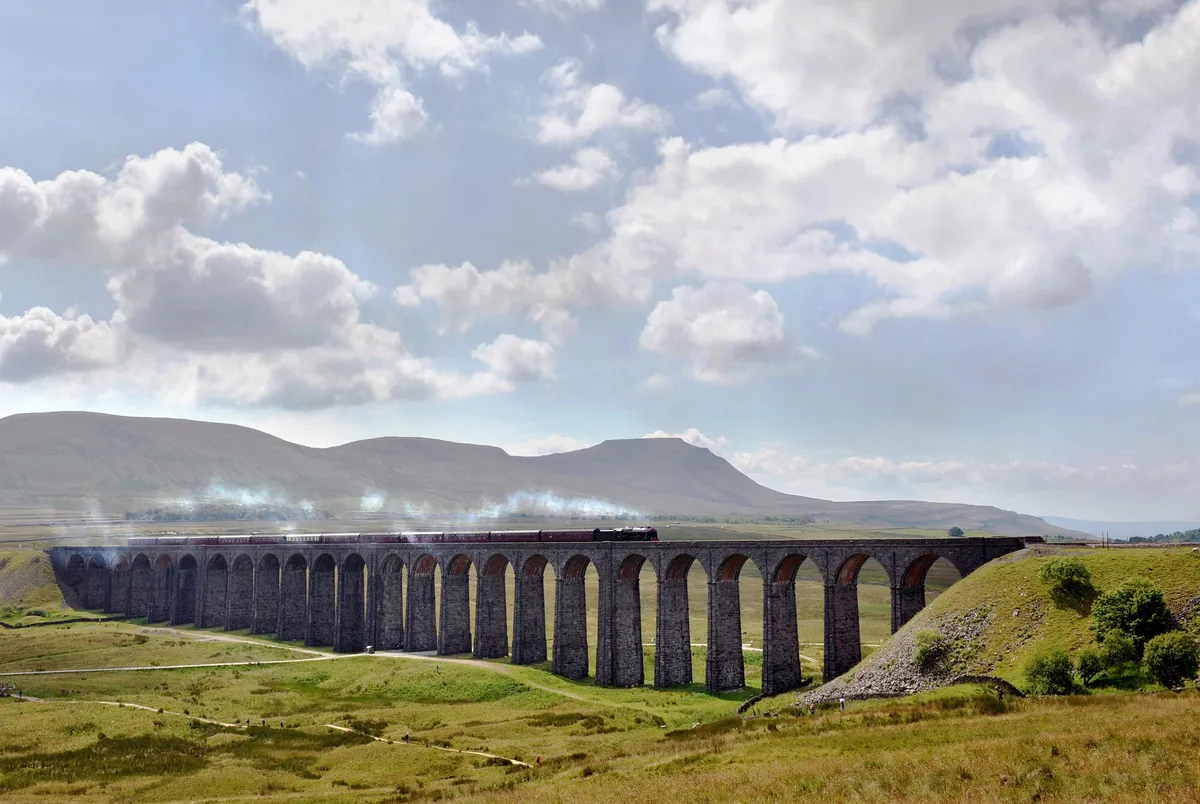
History of Britain's rail network
Britain’s rail network expanded rapidly in the mid-19th century to spread to the far reaches of this land. The railway enabled the Industrial Revolution, introduced standardised time across Britain, and was a great social leveller, opening up affordable and practical holidays and travel for all.
For a brief period in the 1960s, the railways of Britain fell out of favour as we fell in love with the car, but the early 21st century saw a rail renaissance as a greener alternative to congested roads.
Why travel by train?
Our railways remain an important part of the national infrastructure, supporting the economy through the movement of goods and people.
They are also fabulous leisure activities in their own right and there are some splendid journeys to be had, from the famous Settle–Carlisle line across the Pennines, to the West of England mainline along the Devon and Cornwall coasts.
You can still step on board a sleeper train in London and wake up the next day in Penzance, Inverness, or Fort William, a splendid way to get to the starting point of perhaps the most scenic of all rail journeys: the West Highland Line.
The best train journeys in the UK
West Highland Line - Fort William to Mallaig, Highland
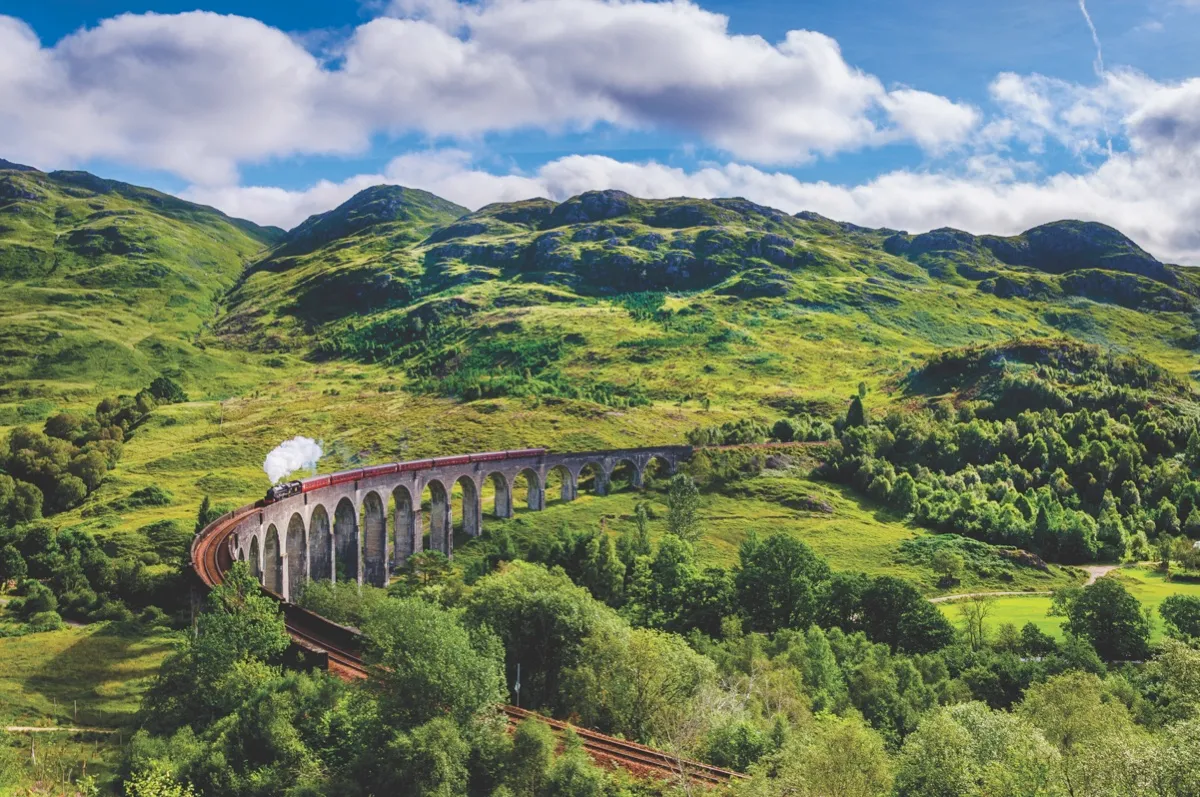
Regularly voted one of the best railway journeys in the world, the West Highland Line connects Glasgow with Fort William – the gateway to Ben Nevis. Perhaps the most spectacular section of an already impressive route is the extension from Fort William to the fishing port and ferry terminal at Mallaig.
The steam train gets underway from Fort William station and immediately runs on below towering Ben Nevis as it threads its way through Banavie and Corpach. The scenery is spectacular as the railway hugs the shore of salt-water Loch Eil.
The engine is working hard on the climb as it hauls the train away from the loch and across the impressive Glenfinnan Viaduct, made famous in the Harry Potter films. As the train slows across the viaduct, spectacular views open out across to the Glenfinnan monument and along the length of Glen Shiel.
The journey continues to impress as your train winds on through some of the best West Highland scenery on offer, a mix of Munros and lochs. Then suddenly, as you approach Beasdale, you get your first glimpse of the coast at Loch Nan Uamh.
Just when you think it couldn’t get any better, the line continues on through the pretty village of Arisaig, and by Kinloid, where there are views across to the Isle of Skye along with the smaller isles of Eigg, Rhum and Muck.
The superlatives are never exhausted as you continue above the Silver Sands of Morar for the final run into Mallaig and journey’s end. The harbour makes a great place to potter, but if you’re hungry, you should sample locally caught mussels and langoustines at the Cabin restaurant, or you could save it for the end of the day with a visit to the Crannog restaurant in Fort William.
If you’re staying locally and fancy stretching your legs, there is a fabulous 8.9-mile walk from Morar station to Tarbet on Loch Nevis, where you can catch the ferry back to Mallaig train station.
Route details
From April to late October, The Jacobite departs daily at 10.15 from Fort William to Mallaig. In high summer, there is a second daily round trip departure at 12.50. Return fares start at £52. westcoastrailways.co.uk
Words by Chris Gee
Cotswold Line – Oxford to Moreton-inMarsh, Oxfordshire/Gloucestershire
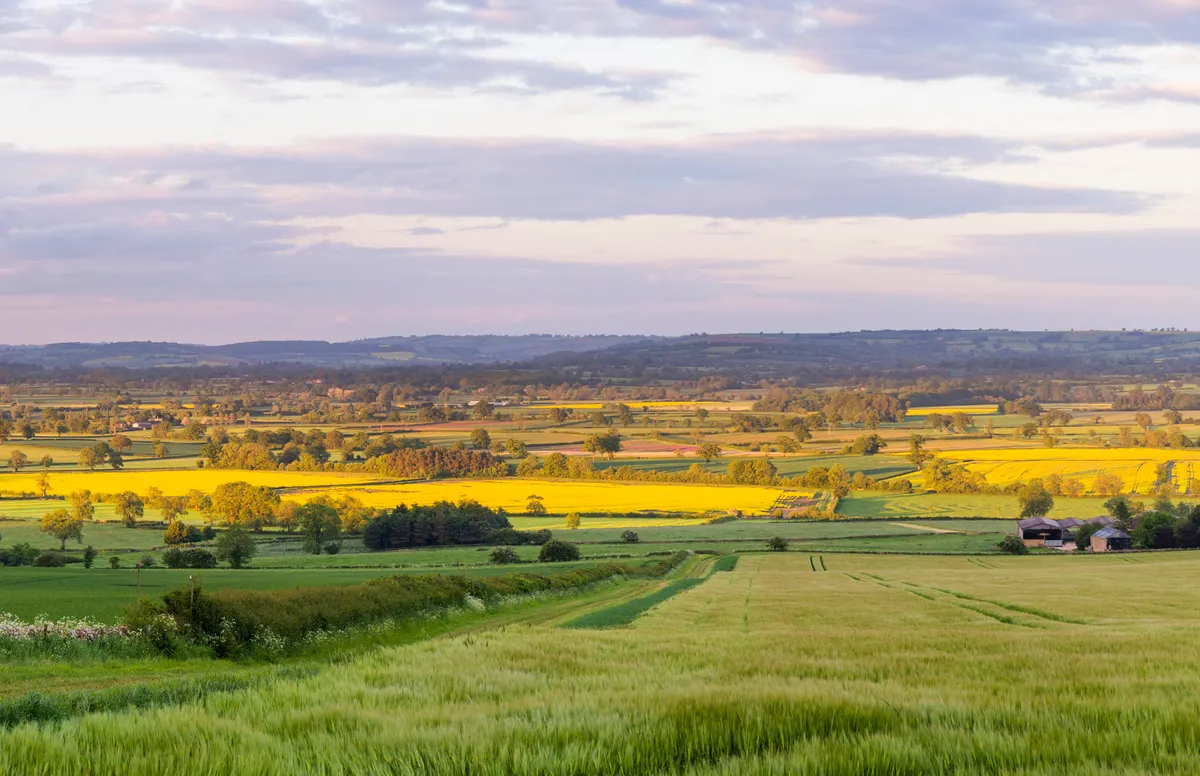
There’s no better way to relish the dreamy days of late summer than with an evocative scenic journey through the hills of the Cotswolds, hopping from one honey-stoned village to the next.
It doesn’t take long for the Cotswold Line to start showing off. Snaking north from its starting point of central Oxford, the line soon passes the wildlife-rich expanse of Port Meadow – an area of common land said to have been unploughed since the days of the Domesday Book. It then delves into the green crinkles of the Evenlode Valley, where rising fields and hawk-flown woods furl out on both sides of the track.
The line runs to Worcester and beyond, but its the stretch between Oxford and Moreton-in-Marsh that excites the most.
Hanborough is the first stop. Disembark to visit the brilliant Oxford Bus Museum, a nostalgia-heavy collection of restored charabancs and buses set in warehouses in the station’s old goods yard. It’s run by volunteers and could easily absorb you for a couple of hours.
The line then winds through a couple of little-used village stops before reaching the more substantial station at pretty Charlbury, designed by Brunel and these days frequented by well-heeled visitors to the nearby chic hotel, Soho Farmhouse.
From this point, the landscapes widen and the views expand, as the Cotswolds appear in all their sheepy finery. Expect vast oaks standing solo in grass meadows, hamlets glimpsed beyond farm gates, and errant Labradors sniffing happily down country lanes. More tiny stations whizz by – there goes Ascott-under-Wychwood, now Shipton – before a stop at foodie favourite Kingham.
As the train continues north, it then passes the site of the now-defunct Adlestrop Station, preserved in Edward Thomas’ evocative 1917 poem: Yes. I remember Adlestrop – The name, because one afternoon / Of heat the express-train drew up there/ Unwontedly. It was late June.
For the cherry on your Cotswolds cake, journey’s end is the honeyed town of Moreton-in-Marsh, where the high street is laden with large lime trees and a range of tearooms in which to refuel.
Route details
Cotswold Line Trains depart Oxford to Moreton-inMarsh at least once an hour. Buy the Cotswolds Discoverer One-Day Pass for £10.50.
Words by Ben Lerwill
Talyllyn Railway – Tywyn to Nant Gwernol, Gwynedd
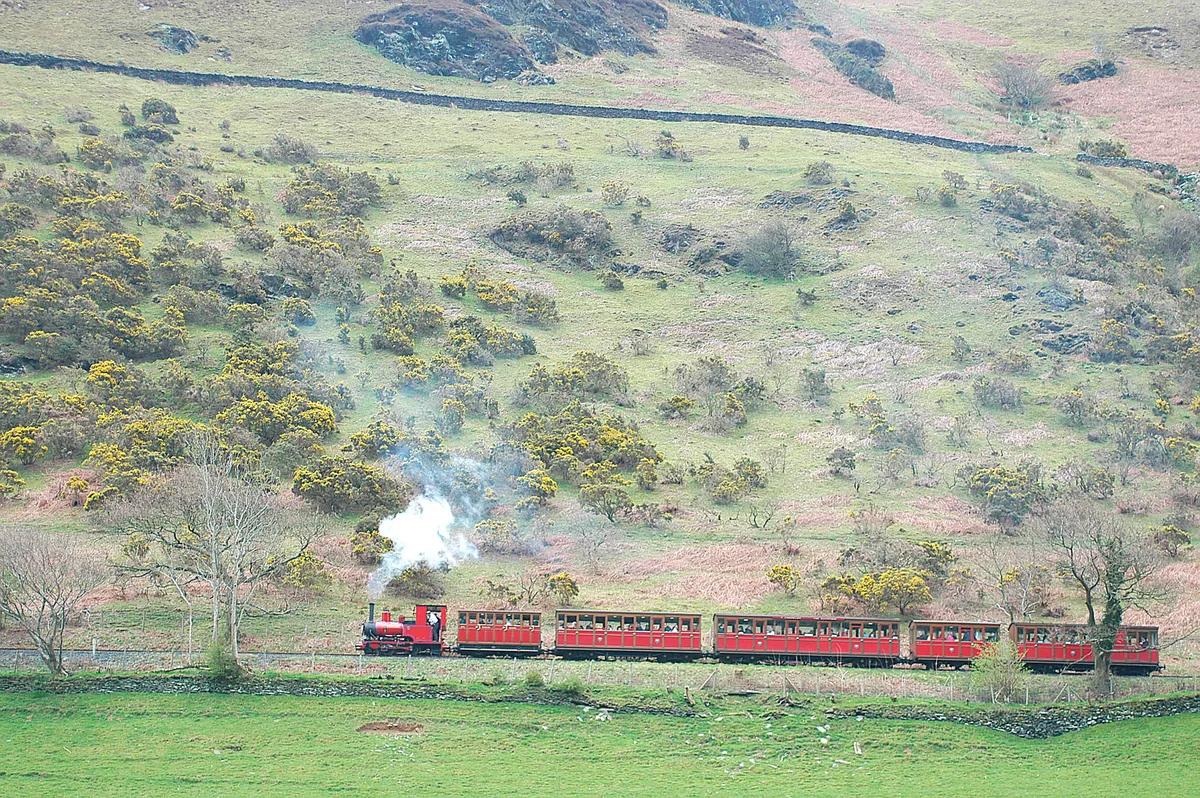
Steam, wood, iron. The tangibility is thrilling. Leather straps open windows that admit the reek of sulphur, whistle-blast and steam, and as the train pulls away from Tywyn, noises too, that are rumbly and rich.
The Talyllyn Railway is special. It is alleged to be the first narrow-gauge railway authorised to carry passengers – one year after being founded in 1865 to export slate from Abergynolwyn – and the first to be preserved by volunteers. The railway was rescued so promptly after the quarries’ closure in 1948 that the original rolling stock was retained. Furthermore, it now boasts UNESCO status, being integral to the Slate Landscape of Northwest Wales World Heritage Site.
It is also special in spirit. Volunteers still maintain the stations, trains, tracks and the museum, which includes a reconstruction of the study where Reverend Awdry, inspired by Talyllyn, wrote the Thomas the Tank Engine books. There are special events too, (like Fish-and-Chip Frydays and Sunset Specials) alongside regular timetables. August is always busy, but there are quieter months.
Route details
Find the Talyllyn Railway – which includes the booking office, shop, museum and King’s Café – at Tywyn Wharf Station. An Explorer Ticket (ride all day) costs £22. talyllyn.co.uk
Words by Julie Brominicks
Furness Line – Lancaster to Silverdale, Lancashire

Explore Lancashire’s rugged limestone coast on a car-free eco escape on board the Furness Line. For many, Lancashire’s coastline conjures up images of candyfloss, ‘kiss me quick’ hats and Blackpool Tower, but the Red Rose county is also home to some outstandingly beautiful rural scenery and unique landscapes.
Tucked away in a secluded corner of Morecambe Bay – where the foothills of the Lakeland Fells meet the rugged limestone coastline of North Lancashire – lies Arnside and Silverdale AONB. This undiscovered enclave is home to dense native woodland, wildflower meadows and extensive nature-rich wetlands.
The Forest of Bowland and Arnside and Silverdale AONBs have joined forces with Lancashire County Council to promote sustainable tourism across the county. Their Eco Escapes campaign encourages visitors to arrive by train and explore the two AONBs on foot, by bike or on e-bike. The pretty little station of Silverdale sits at the sylvan heart of the AONB and is the perfect starting point for coast and countryside walks, as well as visiting one of England’s best-loved nature reserves: RSPB Leighton Moss.
If you’re on foot (after arriving by train), entry to this expanse of lagoons, wetlands and reedbeds is half price.
Route details
Silverdale lies on the Furness Line, which hugs the Lancastrian and Cumbrian coastline from Lancaster, on the West Coast mainline, to Barrow in Furness. Trains run hourly from Lancaster to Silverdale and the journey takes 14 minutes; from £4.40 per adult. northernrailway.co.uk
Words by Mark Sutcliffe
Epping Ongar Railway – Ongar and Epping Fores, Essex
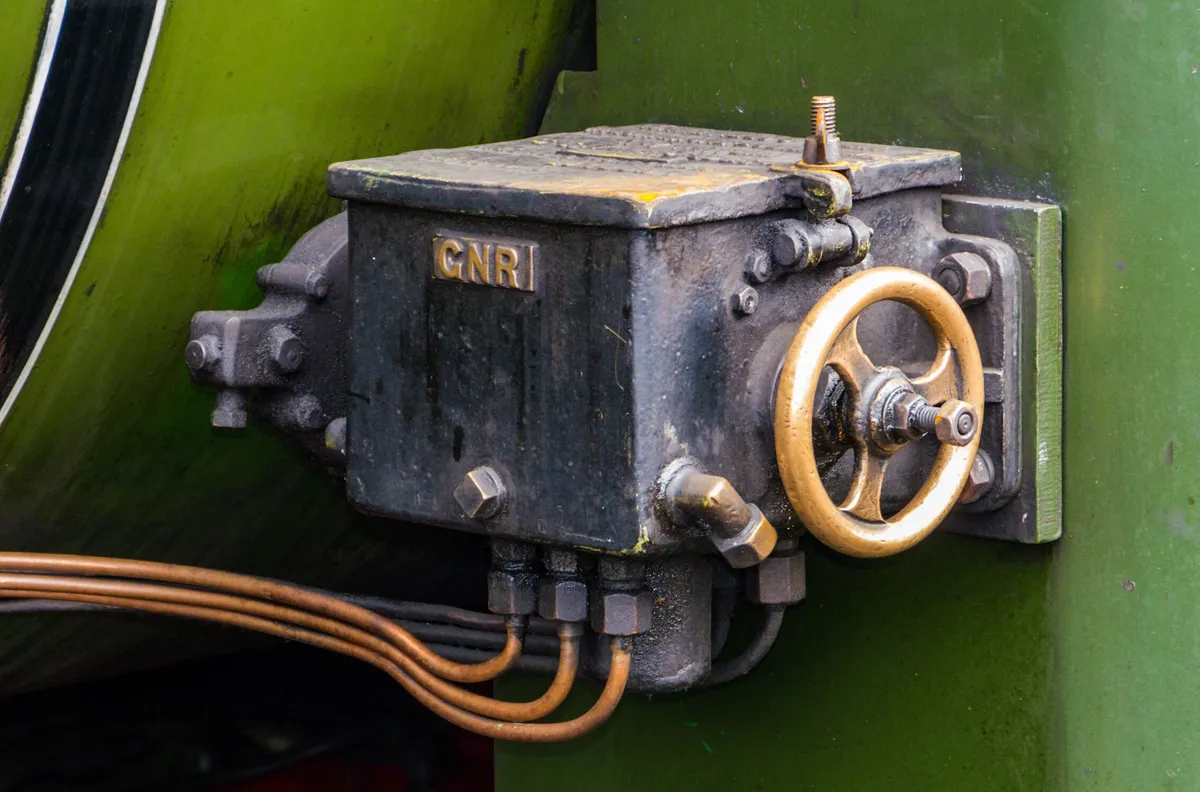
Travel back in time on a historic rail ride through some of the finest countryside in Essex, streaming through ancient Epping Forest before returning on foot
The Epping Ongar Railway was opened in 1865 as a singletrack extension between Loughton and Ongar in west Essex, adding to the existing Eastern Counties Railway between Stratford and Loughton. Declining passenger numbers in the mid- to late-20th century led to the closure of the line onwards from Epping, with the Central Line taking on the remaining section.
The turn of the century saw the formation of the Epping Ongar Railway Volunteer Society, which began to restore the line and stations, retaining the character of bygone years.
Vintage buses take you from Epping station to the restored North Weald Station, with an original signal box dating from 1888. Pause for lunch in the Anglia Buffet restaurant before boarding one of the steam- or diesel-hauled trains that run between Ongar and Epping Forest. Find out more about bike riding in the Epping Forest here.
Route details:
If you buy a Railway Rambler ticket (adult £8, child £4), you can return to Epping along the Essex Way footpath.
Words by Abigail Hamilton-Thompson
Bo’ness and Kinneil Railway, West Lothian
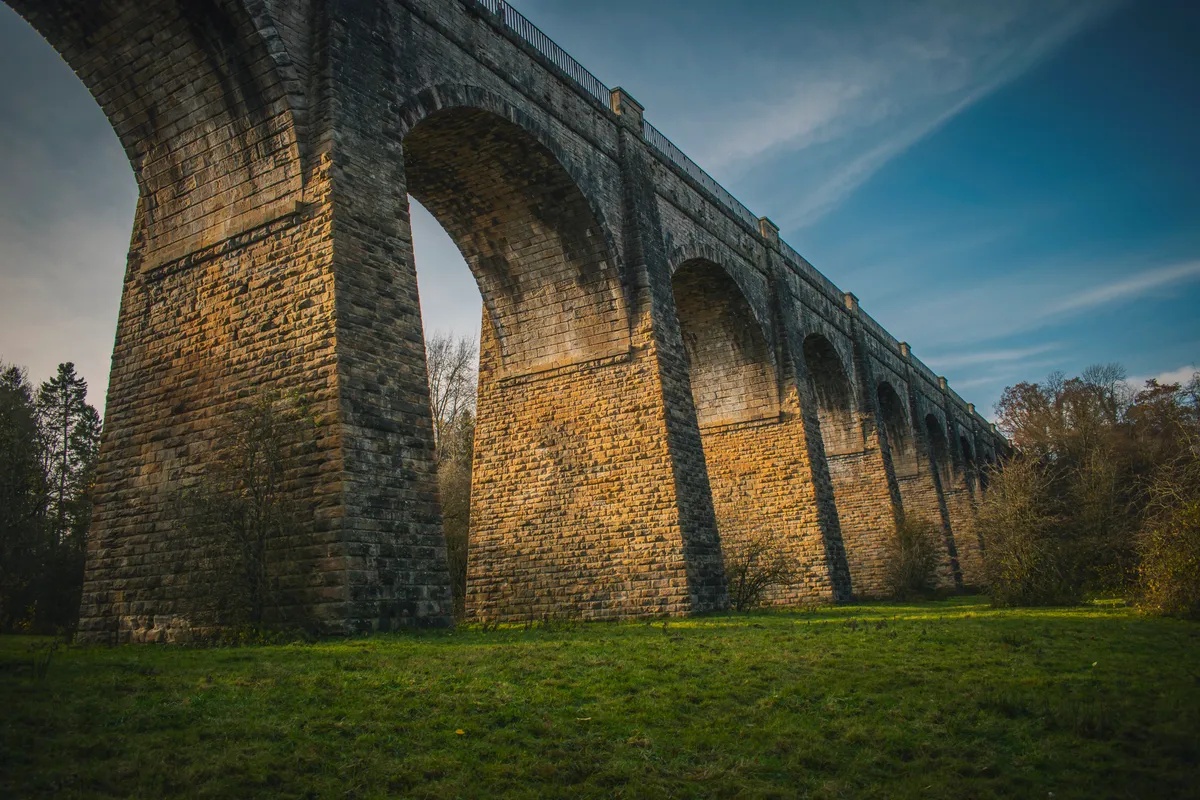
Hop aboard a heritage train and journey along the bucolic banks of the River Forth before discovering one of the finest railway museums in the country
Volunteers of the Scottish Railway Preservation Society began development on the Bo’ness and Kinneil Railway in 1979. Today, the nostalgic steam and heritage diesel trains delight visitors as they chug for 10 miles beside the estuarine River Forth.
With several stops along the way, this journey through open countryside and woods of oak, ash, hazel and wild cherry evokes feelings of yesteryear. After Birkhill, there is a lofty sensation as the train crosses the Avon Viaduct, with views the character of bygone years.
Back at the start point in the riverside village of Bo’ness, visit the Museum of Scottish Railways and learn more about the restored line. Filled with interactive displays and old rolling stock, you can get a discounted entry when you buy a train ticket (adult, £13).
Words by Fergal MacErlean
Watercress Line – Alton and Alresford, Hampshire

For both children and adults, a ride on the Watercress Line is like stepping into the pages of classic literature. Evoking memories of places you’ve never visited and times you never knew, there is just something about steam locomotive travel that stimulates the senses like no other form of transport.
Skirting the idyllic countryside of the South Downs National Park, the line runs for 10 miles between the Hampshire towns of Alton and Alresford, and originally opened in October 1865 as a way of connecting the existing lines at Alton and Winchester. Its creation enabled the establishment of commercial watercress growing in the area, as this highly perishable product could now be swiftly transported to London.
Try one of our recommended best walks in the South Downs National Park while you're there.
So what does a day on the Watercress Line look like in 2022? A typical itinerary, starting from and returning to Alton, takes in the stations of Ropley, Alresford and Medstead & Four Marks. As well as enjoying the stunning views and joys of steam travel, each station gives you a glimpse of what life would have been like along the line back in its heyday.
Route details
The Watercress Line runs from Alton to Alresford or Alresford to Alton and stops at Medstead & Four Marks and Ropley stations. An advance adult ticket costs £20; a ticket for children aged 5–16 is £10.
Words by Duncan Haskell
Conwy Valley Railway – Conwy to Betws-y-Coed, Conwy
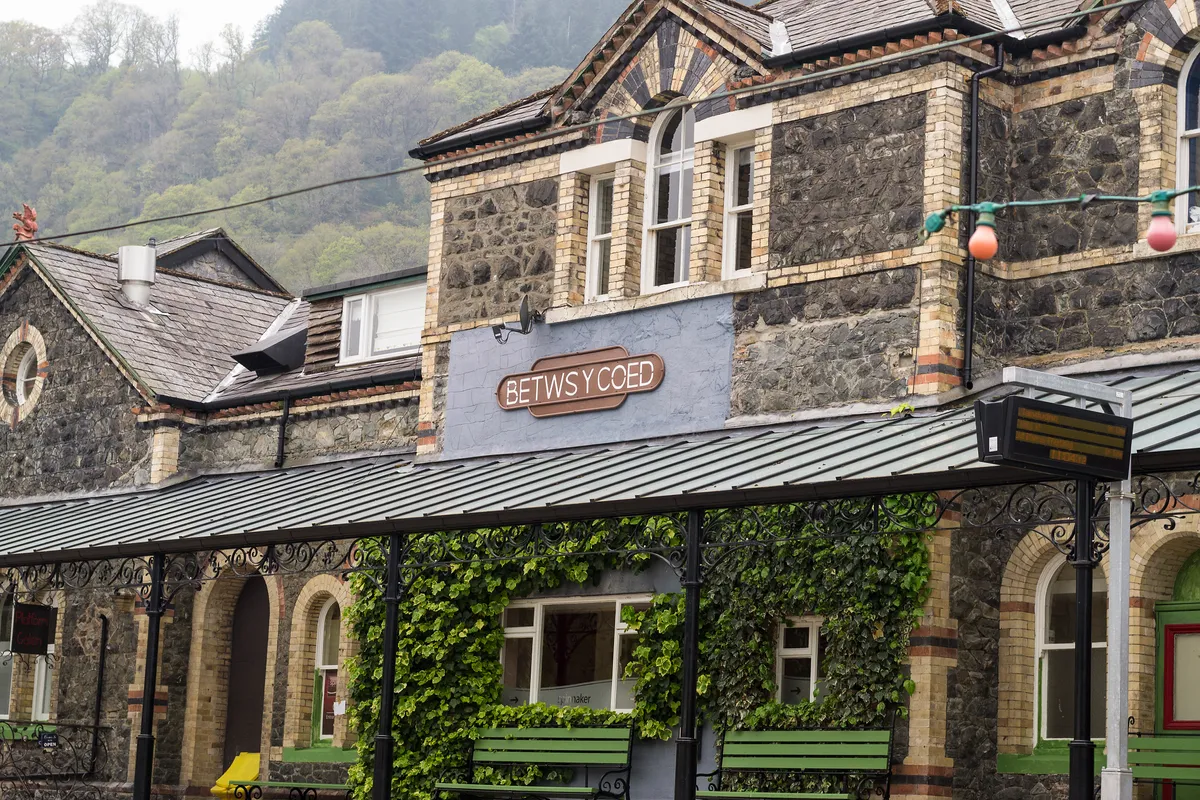
Starting at Llandudno, the Conwy Valley Railway traces the River Conwy along its estuary and passes through lush pastures framed by wooded hillsides and mountains to reach the heart of Snowdonia National Park. Never far from the river, there’s much birdlife.
Now operated by Transport for Wales, the line was originally part of the London and North Western Railway, which arrived at Betws-y-Coed in 1868.
For the best views, sit on the right side of the carriage, facing the direction of travel. Leaving the town, enjoy views of the coastline, Puffin Island off Anglesey and, further on, Conwy Castle. The train stops at Llandudno Junction, where passengers travelling on the North Wales Line join the Conwy Valley Railway.
The train now becomes single track as it glides into the Conwy Valley to pass the Conwy RSPB reserve. It runs close to the river where, at low tide, shelducks and oystercatchers probe for molluscs. Herons stand gaunt in the shallows and cormorants may be spotted drying their wings.
Snowdonia’s most northerly mountain, Tal y Fan, straddles the long ridge above the valley. Further on, the white houses of Dolgarrog fringe the forested hillside, leading to the village of Trefriw, where paddle steamers called until 1939.
Just before Llanrwst North station, the train stops at a signal box for the exchange of tokens. After a few more miles, you’ll cross the rivers Conwy and Llugwy to arrive at Betws-y-Coed. Cross the bridge over the railway if you would like to visit the Conwy Valley Railway Museum.
Words by Dorothy Hamilton
Riviera Line, Exeter to Teignmouth, Devon
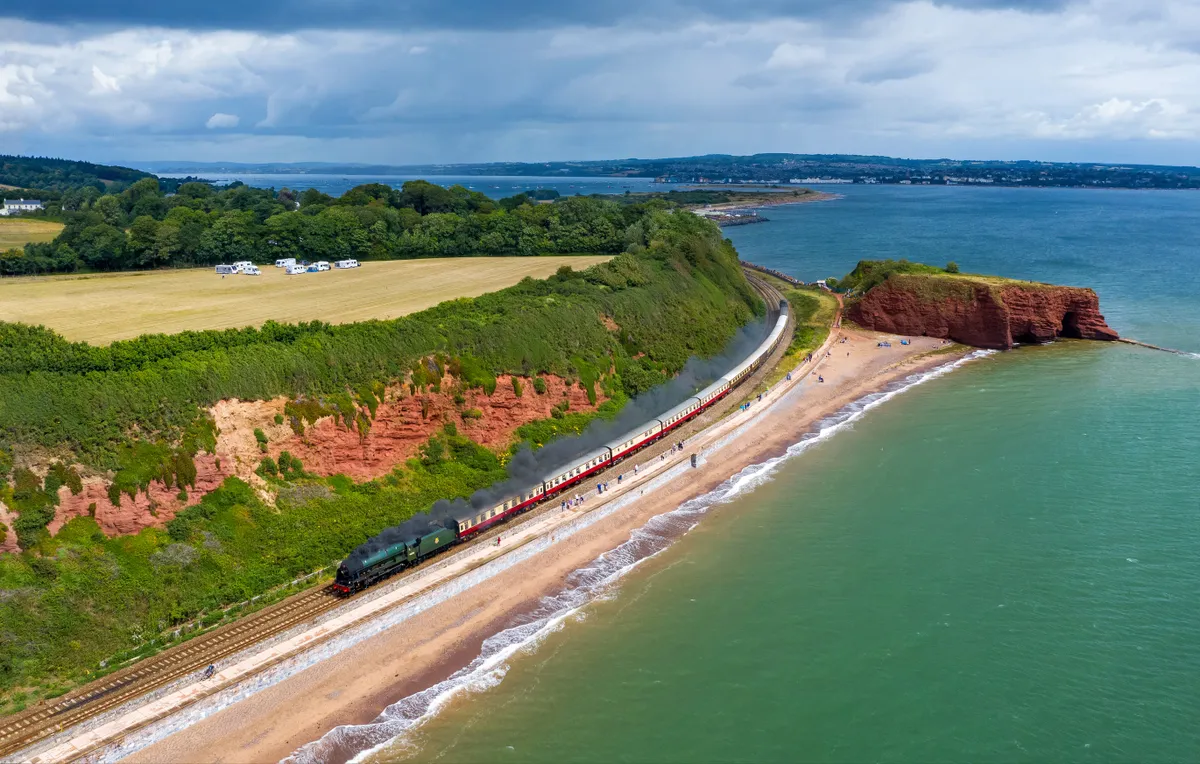
If you have never travelled on the Riviera Line between Exeter and Torbay, you have missed out on a sensory treat.
Whether you are a first-time visitor or an eager returnee, that first glimpse of water as your train meets the wide expanse of the Exe Estuary is guaranteed to lift your soul. The light changes here, and when you disembark at Teignmouth, you’ll discover that the air does, too.
The first section of the Riviera Line, from Exeter to Teignmouth, was opened in 1846, and extended to Newton Abbot later that year. Further extensions took it to Paignton by August 1859. The line was originally one of Isambard Kingdom Brunel’s ill-fated broad-gauge railways, but government diktats led to it being converted to standard gauge in 1892. Another one of Brunel’s quirky choices was the atmospheric propulsion system that powered the railway for just a year.
The Riviera Line has been prone to rock falls and sea damage since its conception. In February 2014, it made the news for all the wrong reasons. Stormy seas breached the sea wall at Dawlish and washed away a significant section of track. This cut off the whole of the south-west peninsula from the rail network. Work to protect the sea wall and railway is still ongoing today.
With the exception of tunnels, the Riviera Line offers splendid estuary and sea views all the way from Powderham to Newton Abbot. Enjoy the speeded-up spectacle in seated comfort, then absorb a healthy dose of sea air as you complete the Teignmouth to Dawlish Warren section of your return journey on foot.
Route details:
Embark at Exeter St Davids and disembark at Teignmouth (£5.50 off-peak day return), then walk the South West Coast Path back from Teignmouth to Dawlish Warren, and return to Exeter by train. greatscenicrailways.co.uk
Words by Fi Darby - discover more of Fi's adventures by train: fidarby.co.uk/adventures-by-train
West Highland Line – Fort William to Corpach, Highland

Take a 10-minute journey from Fort William to Corpach to enjoy spectacular views of Ben Nevis and sample a short section of the Great Glen Way alongside the Caledonian Canal, including Neptune’s Staircase on the canal.
West Highland Line – Tyndrum to Bridge of Orchy, Highland
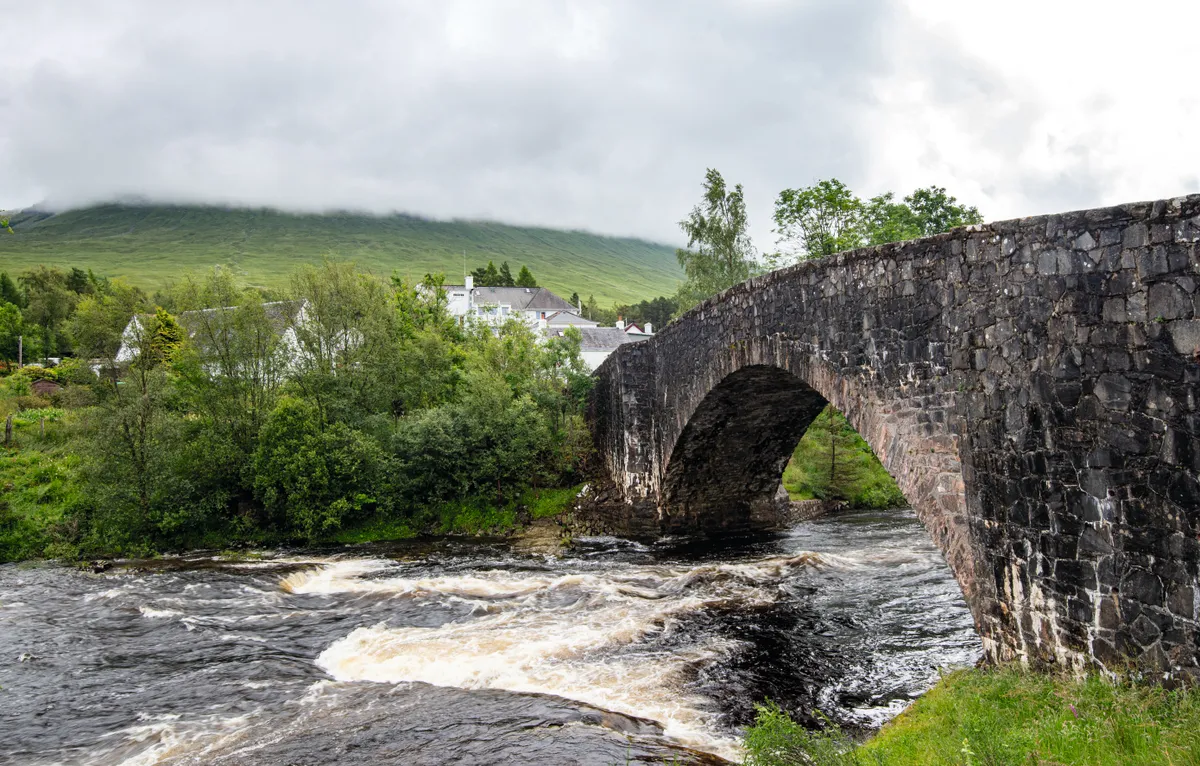
Catch the train from Tyndrum to Bridge of Orchy to enjoy a fabulous horseshoe curve on the line before sampling a seven-mile stretch of the West Highland Way on the Old Military Road to return to Tyndrum.
West Highland Line – Crianlarich to Oban, Highland

Enjoy a stunning 70-minute, 42-mile journey from Crianlarich along the shores of Loch Awe and Loch Etive to visit the busy port of Oban, gateway to the Western Isles. With plenty of places to stay, the seaside town makes a great base.
Best seaside railways
East Hill Cliff Railway, Hastings, Kent
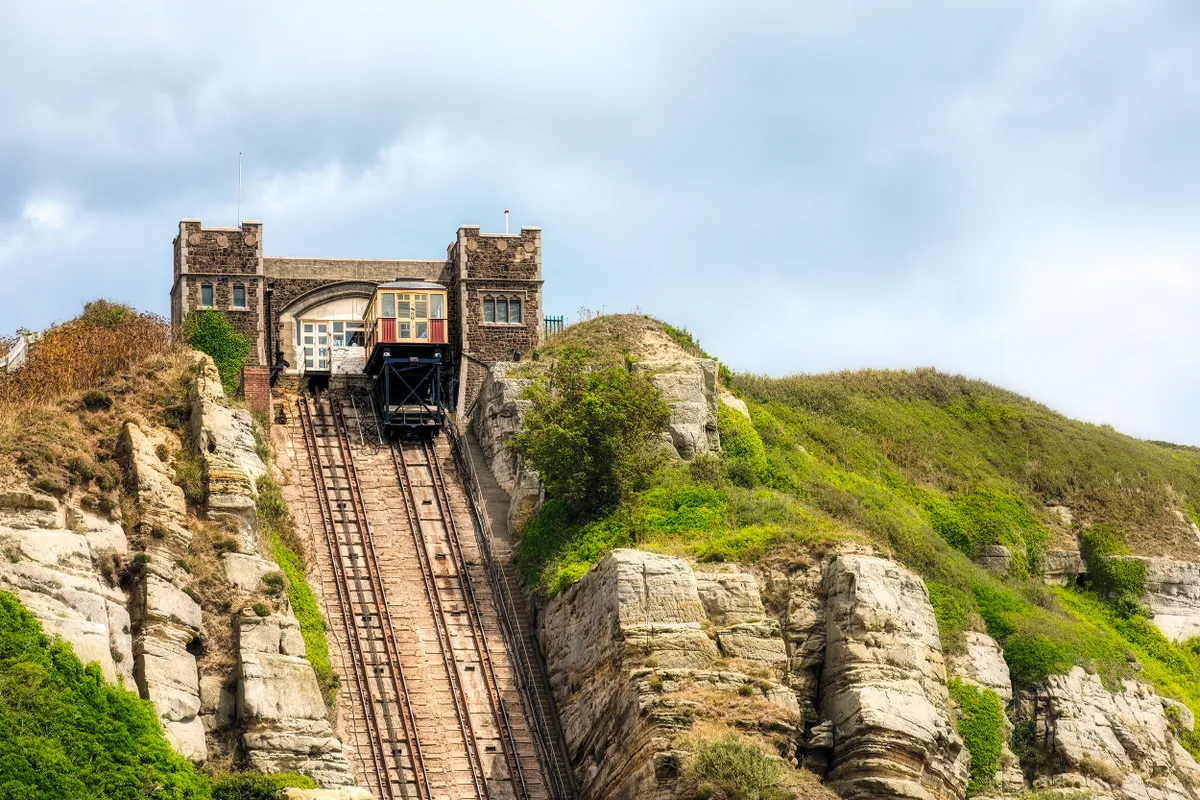
Opened on 10 August 1902, the UK’s steepest funicular railway links Stade Beach – home to Europe’s largest beach-launched fishing fleet – with Hastings Country Park. Take the 81-metre journey to explore this nature reserve, home to peregrines and Dartford warblers.
Southend Pier Railway, Southend, Essex

Serving the world’s longest pleasure pier, the railway line stretches 1.25 miles into the Thames Estuary, terminating at the pier head. Collect a Wildlife Watch leaflet (£1), take the 10-minute journey to Pier Head, then tick off your wildlife sightings – seals, porpoises, dolphins, curlews, oystercatchers, dunlin and more.
Strathcarron to Kyle of Lochalsh, Highland

Boarding at Strathcarron, the final 16 miles of the Inverness to Kyle of Lochalsh railway line hug Loch Carron’s shoreline before reaching the sea near Stromeferry. Lucky rail trippers may spot white-tailed eagles, golden eagles, seals and otters from the warm confines of the railway carriage.
Aberystwyth Cliff Railway, Ceredigion
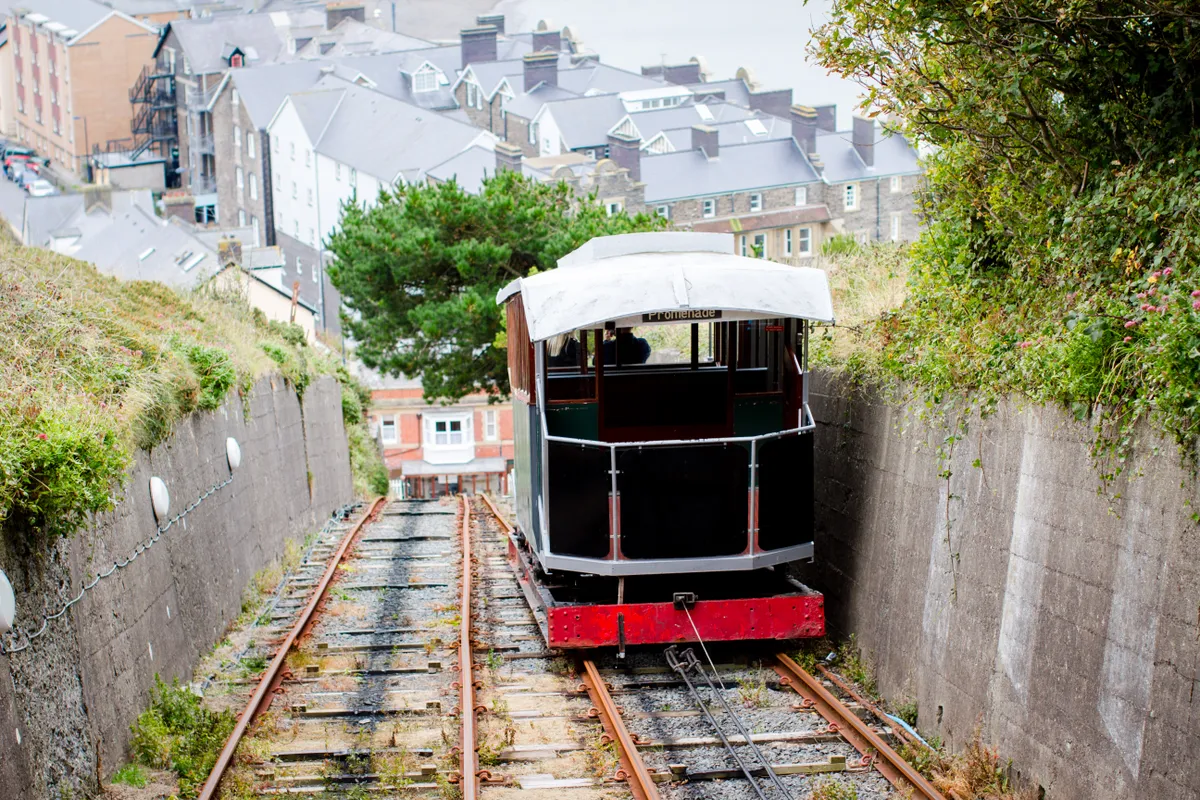
The longest funicular electric cliff railway in Britain travels 237 metres to the summit at a stately four miles per hour, linking Aberystwyth with Constitution Hill. At the top you’ll find one of the world’s largest camera obscuras, with its 35.5cm lens offering views across 1,000 square miles of Wales and Cardigan Bay.
Giant's Causeway and Bushmills Railway, County Antrim

On its launch in 1883, the Giant’s Causeway Tram was hailed as the world’s first long electric tramway. Today, a two-mile narrow-gauge railway uses the tram’s track bed to take visitors on a 20-minute journey from Bushmills, travelling beside the River Bush and the vast sandy sweep of Bushfoot Beach to the World Heritage Site.
Lynton and Lynmouth Cliff Railway, Devon
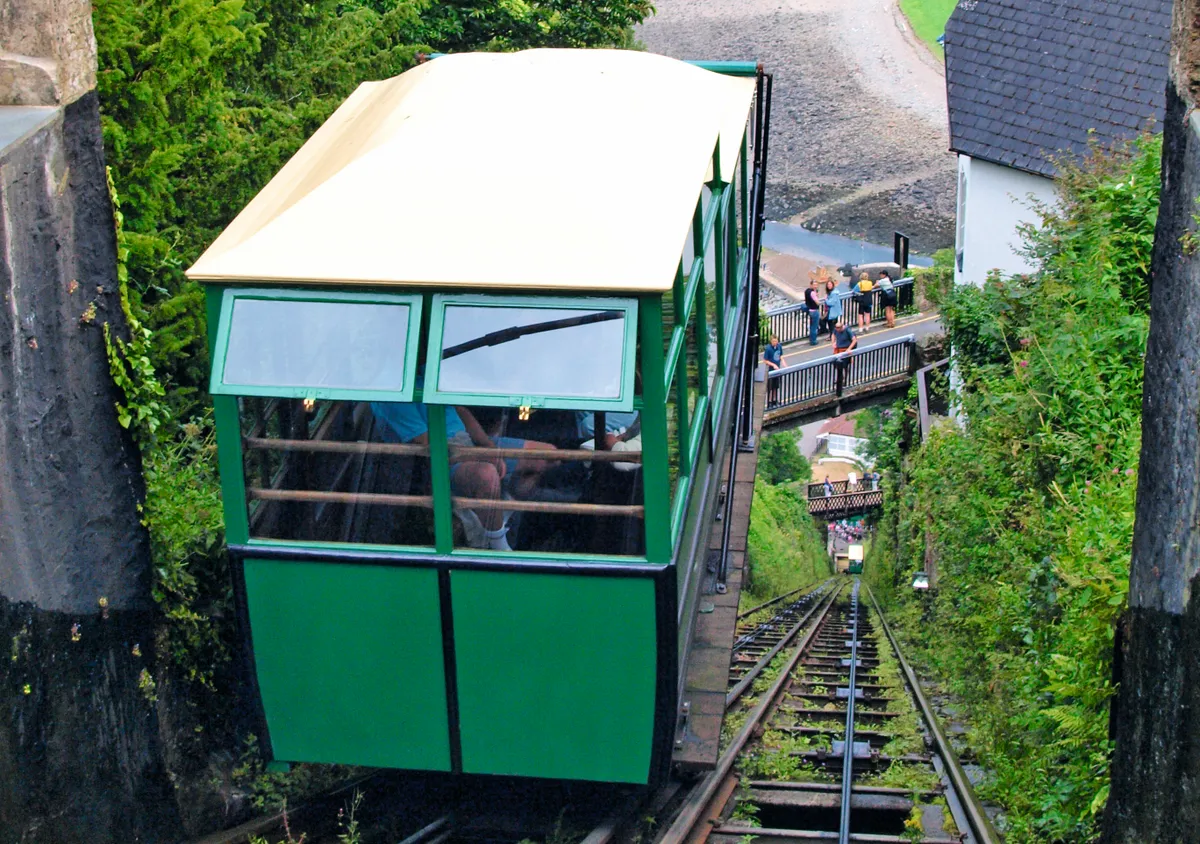
Linking Lynmouth with Lynton, this is the highest and steepest completely water-powered railway in the world. Using water from the River Lyn, the carriages rise to a height of 152 metres along 262 metres of track. Using mostly manual labour, excavation of the cliffside to carve out the precipitous route began in 1887 and took less than three years – a remarkable achievement.
Seaton Tramway, Seaton, Devon
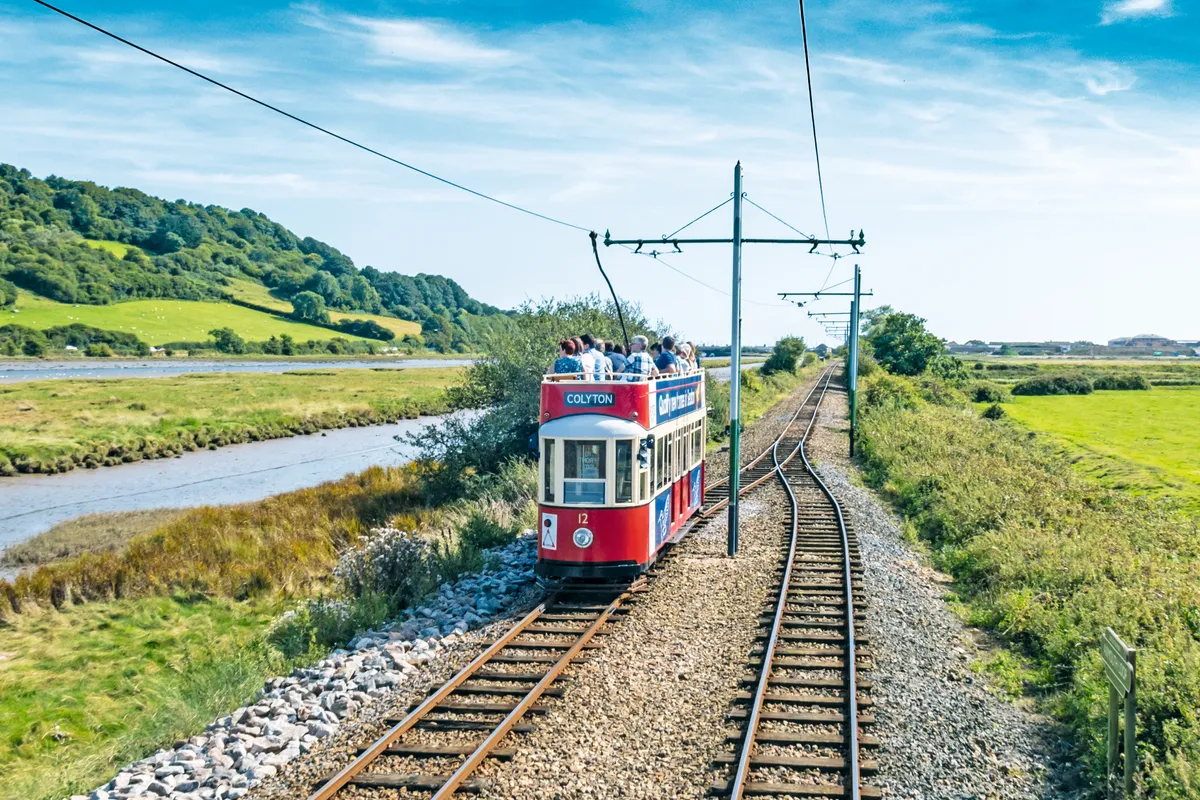
This three-mile electric tramway links the charming town of Colyton with the Jurassic Coast at Seaton. Passing through two nature reserves, the 30-minute ride is perfect for spotting kingfishers, herons, foxes and little egrets. Seaton’s station is just 250 metres from the town’s pebble beach, where you can join a stretch of the South West Coast Path.
Words by Simon Whaley
Top image: Glenfinnan Viaduct on the West Highland Line/Credit: Getty Images

